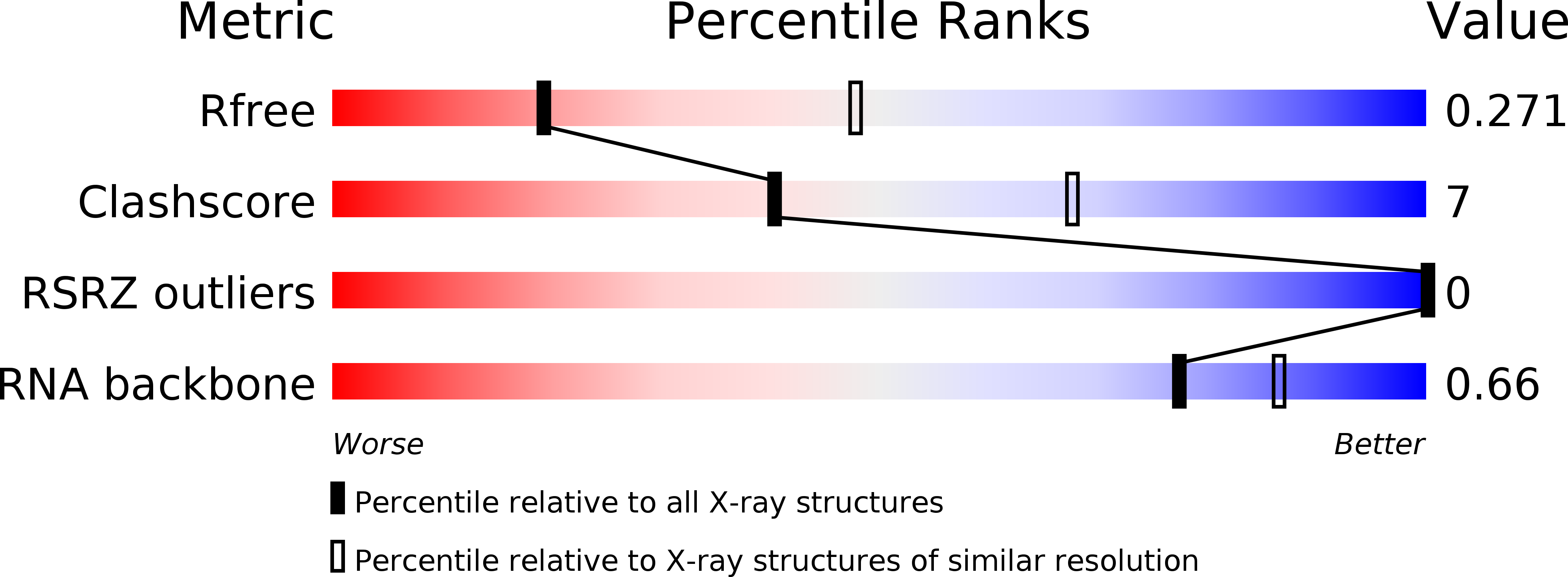
Deposition Date
2009-09-01
Release Date
2010-01-19
Last Version Date
2023-09-06
Entry Detail
PDB ID:
3IVN
Keywords:
Title:
Structure of the U65C mutant A-riboswitch aptamer from the Bacillus subtilis pbuE operon
Biological Source:
Source Organism:
Bacillus subtilis (Taxon ID: 1423)
Host Organism:
Method Details:
Experimental Method:
Resolution:
2.80 Å
R-Value Free:
0.27
R-Value Work:
0.22
R-Value Observed:
0.23
Space Group:
C 1 2 1


